
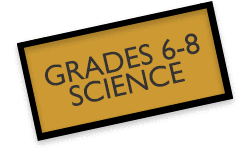

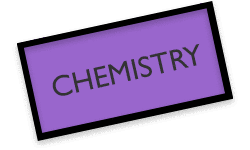
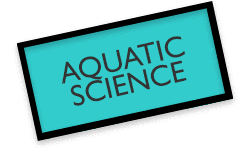
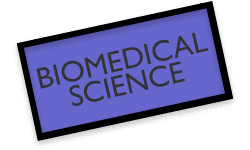
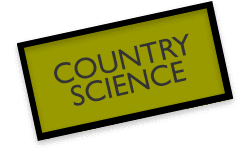
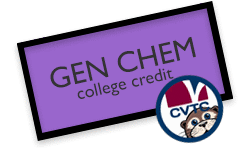
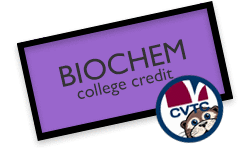


Welcome to Chemistry! Everything is made up of matter. Chemistry introduces students to the study of matter, its interactions with other matter, and energy. [close]
About Chem: Learning Tools | Course Description & Competencies | School Supply List
The 2024-2025 Syllabus will tell you what you need to know to be successful.
Our Assignment Board is where you can find our calendar of learning events.
We will be using Google Classroom as our Learning Management System (LMS). It will help us to organize our lesson details and e-materials.[top]
Course Description & Competencies
Course Description
CHEMISTRY
Credit: 1.0 GHS Credit
Grade level: 10-12
Prerequisite: Algebra I
Length: one year
Chemistry is an inquiry-based course designed to cover the basic concepts of general chemistry leading to the understanding of the composition, properties, and changes in matter. This will be accomplished using a thematic, guided inquiry approach. Introductory principles covered in this course will include matter, atomic structure, bonding, molecular structure and properties, phase changes, behavior of gases, stoichiometry, solution chemistry, acids and bases, thermodynamic basics, reversible reactions, and chemical equilibrium. Laboratory and general activities that combine conceptual understanding with problem solving are integrated into this course. A large part of the course requires a comprehensive understanding of Algebra.
Note: Students that have successfully completed Chemistry may want to also take
- General Chemistry (GHS)/General Chemistry 806-134 (CVTC) or
- Intro to Biochemistry (GHS)/Intro to Biochemistry 806/186 (CVTC)
and earn college credits. If you have the slightest thought that you may sign up for these classes, be sure to keep your Chemistry notebooks. We will continue to use it as a study tool.
Course Competencies
Upon successful completion of this course, students will be able to satisfy the following Wisconsin Standards for Science Disciplinary Core Ideas. (NOTE: Engineering, Technology, and the Application of Science DCI will also be covered, but are not listed in detail.) Our most essential standards are highlighted in bold.
- Standard SCI.PS1: Students use science and engineering practices, crosscutting concepts, and an understanding of matter and its interactions to make sense of phenomena and solve problems.
- SCI.PS1.A.h, Structures and Properties of Matter
The sub-atomic structural model and interactions between electric charges at the atomic scale can be used to explain the structure and interactions of matter, including chemical reactions and nuclear processes. Repeating patterns of the periodic table reflect patterns of outer electrons. A stable molecule has less energy than the same set of atoms separated; one must provide at least this energy to take the molecule apart.- SCI.PS1.B.h, Chemical Reactions
Chemical processes are understood in terms of collisions of molecules, rearrangement of atoms, and changes in energy as determined by properties of elements involved.- SCI.PS1.C.h, Nuclear Processes
Nuclear processes, including fusion, fission, and radioactive decays of unstable nuclei, involve release or absorption of energy.- Standard SCI.PS2: Students use science and engineering practices, crosscutting concepts, and an understanding of forces, interactions, motion and stability to make sense of phenomena and solve problems.
- SCI.PS2.B.h, Types of Interactions
Attraction and repulsion between electric charges at the atomic scale explain the structure, properties, and transformations of matter, as well as the contact forces between material objects.- Standard SCI.PS3: Students use science and engineering practices, crosscutting concepts, and an understanding of energy to make sense of phenomena and solve problems.
- SCI.PS3.A.h, Definitions of Energy
Systems move towards more stable states.- SCI.PS3.B.h, Conservation of Energy and Energy Transfer
The total energy within a system is conserved. Energy transfer within and between systems can be described and predicted in terms of energy associated with the motion or configuration of particles (objects).- Standard SCI.PS4: Students use science and engineering practices, crosscutting concepts, and an understanding of waves and their applications in technologies for information transfer to make sense of phenomena and solve problems.
- SCI.PS4.A.h, Wave Properties
The wavelength and frequency of a wave are related to one another by the speed of the wave, which depends on the type of wave and the medium through which it is passing. Waves can be used to transmit information and energy.- SCI.PS4.B.h, Electromagnetic Radiation
Both an electromagnetic wave model and a photon model explain features of electromagnetic radiation broadly and describe common applications of electromagnetic radiation.[top]
- Provided by Student:
- two college ruled composition-style notebooks
- pencils
- Full Classroom Set Provided by Teacher:
- markers
- colored pencils
- scissors
- glue
- Partial Classroom Set Provided by Teacher:
- scientific calculator, similar to TI-30Xa
[top]
GO PIRATES!
Gilman Middle/High School
325 N Fifth Ave
Gilman, WI 54433